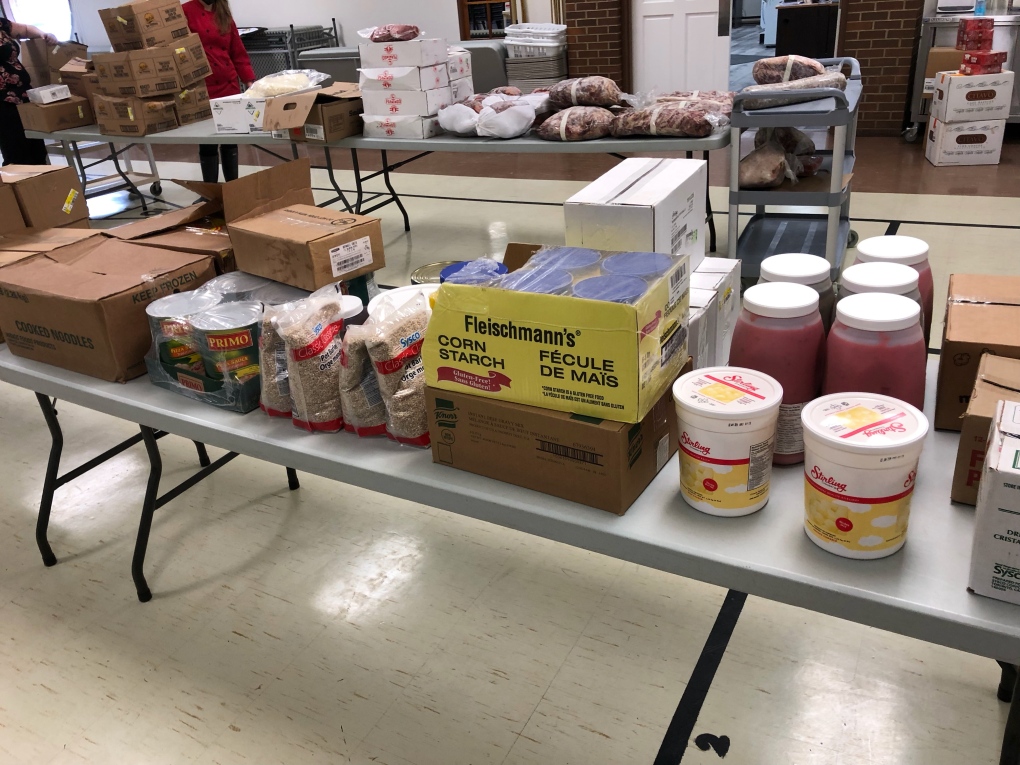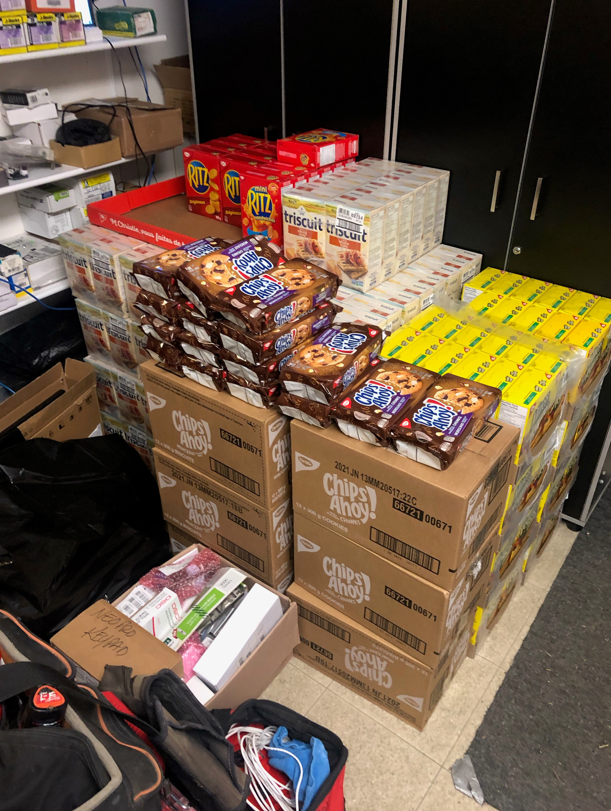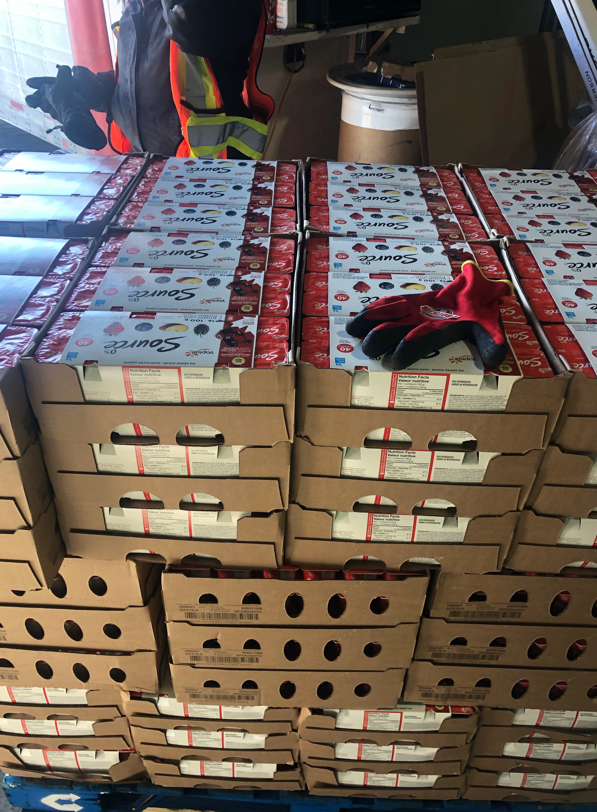'Self-select the level of help they need': Brandon Food Rescue Store seeing success in helping Manitobans put food on the table
 Source: Facebook
Source: Facebook
Food that would never make it to a grocery store, restaurant or a person's dinner table is now being rescued to help Manitobans.
The Brandon Food Rescue Store has been open since December 2021 and sells food that didn't make it to a distributor on time at a significantly reduced cost.
Ted Dzogan, the chair of the board for the John Howard Society of Brandon—which is the registered charity for the food rescue store, explains how food rescuing works.
"A grocery chain, any grocery chain in Winnipeg, would have a distribution warehouse probably in Winnipeg and that warehouse is going to have a regular schedule of shipments arriving," said Dzogan.
Once product is ready to go, it is shipped out to all the grocery stores throughout the city.
"If a trailer is delayed by more than 24 hours (to the warehouse), they don't want it. They have another coming tomorrow which will be a newer, fresher product with a longer shelf life. That delay has meant that shipment may be rejected."
 A variety of food at the Brandon Food Rescue Store. (Source: Ted Dzogan)
A variety of food at the Brandon Food Rescue Store. (Source: Ted Dzogan)
If the product is rejected, Dzogan said it could be written off. He added there is more food lost in the distribution network than there would be at restaurants and grocery stores.
When product is rejected, this is where Dzogan and the food rescue store come into play. He said he will receive phone calls about a variety of items, from ice cream to chicken wings.
The trailer full of food will come to the store, with Dzogan saying they take on the cost of shipping and diesel and storing the food.
This food will then hit the shelves of the store or in some instances, Dzogan said they have been able to stock the shelves and also give food to the food banks in the area.
"What we are trying to let people do is get as much help to as many people, while people are allowed to self-select the level of help they need."
In the month of March, Dzogan said the food rescue store processed 720 transactions with 375 of those transactions coming in the last week alone.
"(Last week) there was a tremendous rescue. It had frozen chicken wings. We had 12,150 pounds of frozen chicken wings."
'A LOT OF ROOM FOR GROWTH IN THE FOOD RESCUE WORLD'
Dzogan said food rescue has been extremely successful so far in Brandon, but it isn't a perfect system yet.
"There is a lot of room for growth in the food rescue world, especially in Manitoba. We're still not really hitting on all cylinders. So one of the biggest issues we have when a food rescue becomes available, we usually have 48 hours or less to find a home for that food because it needs refrigeration or freezer space."
He said more permanent food rescue freezer space needs to be available in Manitoba and he hopes that will happen in the next year.
 A variety of items rescued by the Brandon Food Rescue Store. (Source: Ted Dzogan)
A variety of items rescued by the Brandon Food Rescue Store. (Source: Ted Dzogan)
"When that happens, when a food rescue becomes available instead of scrambling to organize everything, we just say, 'drive it here, we'll unload it and then we have seven to 10 days to sort it out with the community.' Once we are able to do, our ability to rescue to food will go up five, six-fold."
Looking into the future, Dzogan said they want to expand their store space along with their warehouse storage.
He also wants to build and expand relationships with distributors so more products can be rescued.
"Right now, at least 50 per cent of the food that goes through our programs in Brandon is actually not from the community, it's coming from somewhere else. We need to redouble our efforts to build those relationships more locally, but also work with them where they exist."
Dzogan feels this kind of program is something that could be self-sustainable that doesn't need government help if it is run properly.
"Instead of living year-to-year on grants from the government and not being sure if you can stay open. A well-organized and well-run food rescue store can be a break-even proposition and can exist in many communities in Manitoba without the need for tremendous amounts of government support."
 Containers of yogurt rescued by the Brandon Food Rescue Store. (Source: Ted Dzogan)
Containers of yogurt rescued by the Brandon Food Rescue Store. (Source: Ted Dzogan)
WHY PAYING FOR RESCUED FOOD PROVIDES MORE HELP
Dzogan said it is important for people to understand why a small price tag is added to rescued food and how it ultimately helps improve not-for-profits.
"We have had a habit in Canada of always kneecapping or restricting success of our not-for-profits by trying to force poverty down all the way down the line. So everything runs on grants, everything has to be done by volunteers, when we pay people, we pay them minimum wage. Not-for-profits, way too often, are below industry standards."
He said these organizations work better when you treat it like a business and they look at how expenses are going to be covered.
He said that means paying people a livable wage so they don't dip into poverty themselves.
"We have to say for every two volunteers, we have to have a paid staff member there. We can't rely solely on people giving up their time. We also need to respect that people who want to be here and help us also need to earn a living and pay bills."
He said when these situations are realized, it is okay to recoup the cost.
"I have never met anyone who has walked out of the food rescue store yet that doesn't feel like they have got a wonderful deal. That isn't happy. Prior to last week, our average transaction was around $7. People are walking out of there with one or two bags of groceries for $7."
He said if this store continues to work, and food bank shelves are stocked along with the store, the country as a whole may have to re-evaluate how not-for-profit organizations work and how bills are covered.
"So far this has been a huge success."
CTVNews.ca Top Stories

BREAKING Donald Trump picks former U.S. congressman Pete Hoekstra as ambassador to Canada
U.S. president-elect Donald Trump has nominated former diplomat and U.S. congressman Pete Hoekstra to be the American ambassador to Canada.
Genetic evidence backs up COVID-19 origin theory that pandemic started in seafood market
A group of researchers say they have more evidence to suggest the COVID-19 pandemic started in a Chinese seafood market where it spread from infected animals to humans. The evidence is laid out in a recent study published in Cell, a scientific journal, nearly five years after the first known COVID-19 outbreak.
This is how much money you need to make to buy a house in Canada's largest cities
The average salary needed to buy a home keeps inching down in cities across Canada, according to the latest data.
'My two daughters were sleeping': London Ont. family in shock after their home riddled with gunfire
A London father and son they’re shocked and confused after their home was riddled with bullets while young children were sleeping inside.
Smuggler arrested with 300 tarantulas strapped to his body
Police in Peru have arrested a man caught trying to leave the country with 320 tarantulas, 110 centipedes and nine bullet ants strapped to his body.
Boissonnault out of cabinet to 'focus on clearing the allegations,' Trudeau announces
Prime Minister Justin Trudeau has announced embattled minister Randy Boissonnault is out of cabinet.
Baby dies after being reported missing in midtown Toronto: police
A four-month-old baby is dead after what Toronto police are calling a “suspicious incident” at a Toronto Community Housing building in the city’s midtown area on Wednesday afternoon.
Sask. woman who refused to provide breath sample did not break the law, court finds
A Saskatchewan woman who refused to provide a breath sample after being stopped by police in Regina did not break the law – as the officer's request was deemed not lawful given the circumstances.
Parole board reverses decision and will allow families of Paul Bernardo's victims to attend upcoming parole hearing in person
The families of the victims of Paul Bernardo will be allowed to attend the serial killer’s upcoming parole hearing in person, the Parole Board of Canada (PBC) says.


































